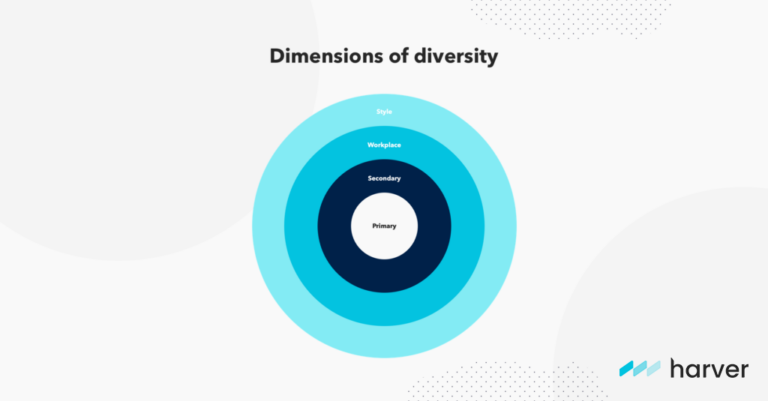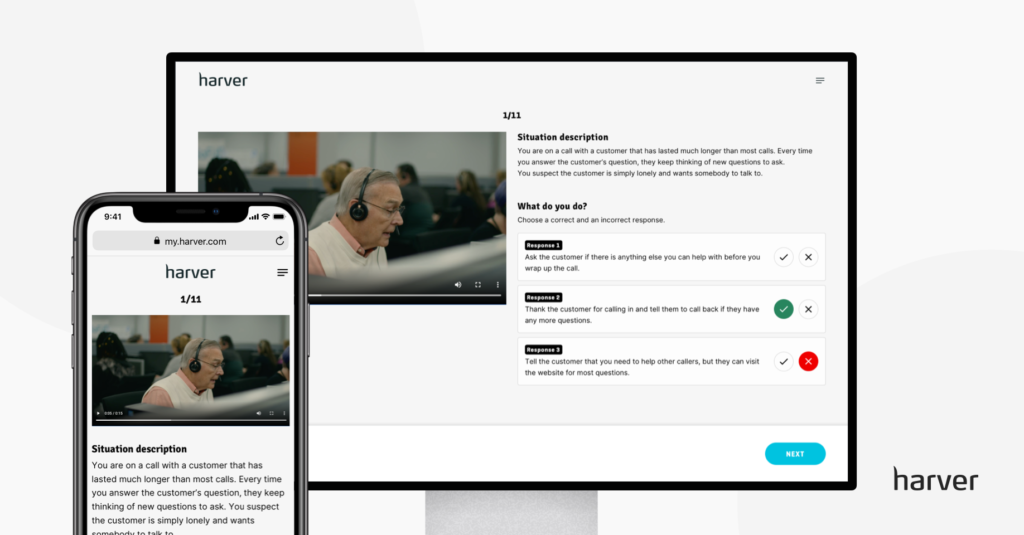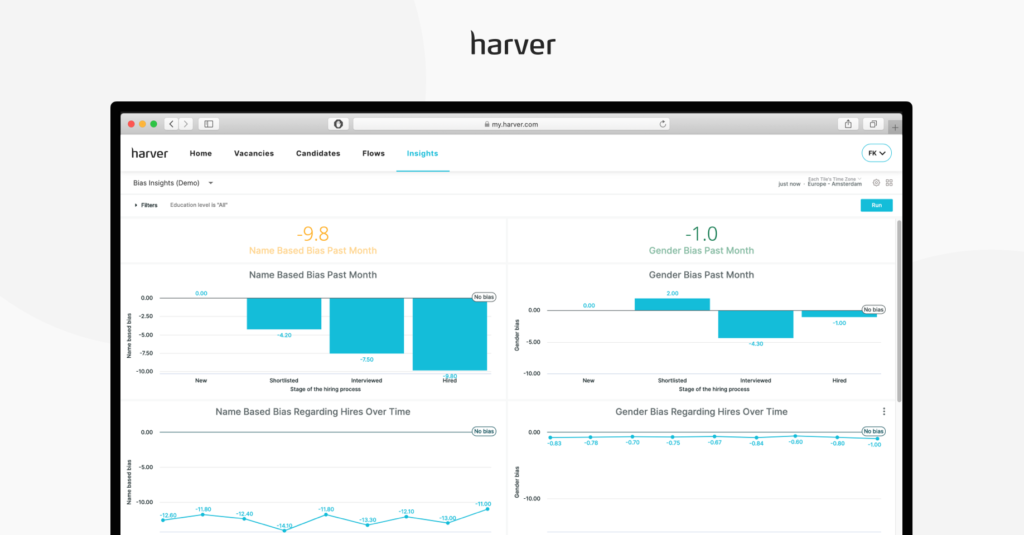This post was originally published in February 2021 and was last reviewed and updated on September 22, 2025.
Creating a diverse and inclusive workforce has been a major initiative for many companies over the last few years, and substantial resources have been spent on diversity initiatives. However, only 23% of HR professionals believe their D&I programs are highly effective.
Overall, there seems to be a mismatch in how organizations design their diversity policies and how they implement them in the workplace. This might be the result of a number of barriers that can make increasing diversity difficult.
Knowing how to measure the success of a diversity or inclusion program is also a challenge. How do you know when your workforce is diverse or inclusive enough?
Moreover, without proper tools in place for measuring how inclusive or how diverse your workforce is, it can be challenging to evaluate the potential impact of such initiatives to decide if they’re worth the effort.
About $8 billion a year is spent on diversity trainings in the United States alone.
-McKinsey & Company
Because diversity has so many different dimensions (including age, gender, race, and more), it’s difficult to know exactly what to measure — and the same goes with inclusion.
So, how can you measure diversity and inclusion initiatives in your organization? Let’s take a look.
Which dimensions of diversity and inclusion can you measure?
Before we dive into diversity and inclusion metrics to keep an eye on, let’s discuss the difference between the two.
Diversity can be defined as the traits or characteristics of an individual. Inclusion is the behaviors that ensure the team feels welcomed. This is where things can get tricky.
For the most part, diversity is easy to identify. But inclusion is invisible — knowing whether or not your team feels included and welcome at the company will require a bit more digging.
However, there are a few ways you can measure both diversity and inclusion to get a better understanding of your workforce.
There are various dimensions of diversity that you can measure.
- Primary, which includes basic characteristics like age (generational diversity), race, gender, and sexual orientation;
- Secondary, including education, marital and parental status, and religious beliefs;
- Workplace, including the individual’s job level, work shift, and years with the organization;
- Style, including work habits, leadership style, and communication style.

Some of these dimensions are easy to attach a number to. Others are a little harder to access. However, it is still possible — and important — to do so.
Not only do diverse and inclusive teams mean 19% greater employee retention, but employees and job candidates say a diverse workforce is important when evaluating a company and job offer.
How can you measure diversity and inclusion?
Now that you better understand what a diverse and inclusive workforce looks like, here are some metrics you can measure to see how your organization stacks up.
1. Diversity of employees vs. application pool
One of the best ways to see if you’re hiring enough diverse individuals is to take a look at who is applying to your open positions versus who you’re actually hiring.
If your team is lacking diversity but you find that your applicants are extremely diverse, this might be an indication that there is bias in recruitment your process. In an ideal world, the diversity of your team will be reflective of the diversity of your applicant pool.
To increase diversity in employees relative to the diversity of applicants, track how this number changes as you hire more individuals. Look for opportunities to eliminate bias in your hiring process and implement new initiatives to reach qualified, diverse employees, to improve the quality of candidates when hiring.
Our D&I software can help with both assessing your current practices and mitigating unconscious bias from the hiring process to build more inclusive and diverse teams. If you’d like to see what it can do for your organization, book a demo below.
2. Diversity across organization levels
Look at diversity and inclusion across your leadership levels. Is your entry-level team extremely diverse, but your leadership does not reflect that?
While your overall team might be diverse, you want the various levels within your organization to reflect the diversity of your team. If this is the case, you need to improve diversity initiatives in how you promote within your organization.
Look at various demographics when measuring diversity at leadership. For example, measuring diversity as a whole is important, but it’s just as important to look at the percentage of women in leadership and percentage of minorities in leadership independently.
It is possible to be inclusive of one demographic while still having bias about other groups. Create initiatives to increase diversity across all areas and levels of your organization.
3. Job satisfaction
Satisfaction with one’s position is a good way to measure inclusion. Although job satisfaction and inclusion are not always directly linked, you can measure specific subject areas that help you better understand if employees feel welcomed at their job.
Happiness, inter-team relationships, and recognition can all be measured through surveys to help understand how employees feel about their teams and their job. If they feel happy with their job, they might also feel more included at work.
However, be sure to look at each specific subject area for deeper insights. If team members are content with their job responsibilities but are lacking relationships with other employees, it could be a sign they don’t feel included.
If this is the case, you’ll want to introduce more inclusivity initiatives to bring the team together.
4. Job retention
Job retention and job satisfaction can go hand in hand, but measuring retention is a qualitative way to measure inclusion.
If you have high employee turnover, this might be a sign that employees are unhappy or unfulfilled with their job. This could also indicate that team members are leaving because they don’t feel included.
In addition to looking at your overall job retention, examine who is leaving and who is staying. If you find that the majority of your diverse hires are leaving, you might have an inclusivity problem. This might point back to an issue with job satisfaction, or more senior diverse employees might be leaving if they don’t see promotion opportunities available to them.
How to choose your D&I metrics
There is no standard or universal set of metrics to measure diversity and inclusion. Each company should take a personalized approach to decide which metrics they want to measure.
When choosing your D&I metrics, one place to start is with your company goals. Are you hoping to increase diversity in leadership? Do you want to make your existing team feel more included and satisfied in their roles? While all of these goals may sound nice, focus your efforts on just a few goals at a time.
You’ll also want to consider the size of your organization and how that can impact D&I, particularly when hiring. If you only hire for one position at a time, it can be difficult to ensure the percentage of diverse individuals hired is reflective of the entire applicant pool.
In larger organizations that hire in high volumes, it can be easier to implement diversity initiatives at each round of hiring.
However, regardless of your size, you want to be conscious of who you are bringing onto your team. Smaller organizations might take more time to create diverse teams, but it is still crucial to eliminate bias during the hiring process to hire the best person for the job — regardless of who they are.
You’ll also want to think about how the diversity dimensions you choose to track will translate into metrics that can help you move the business forward.
For example, just tracking the age of individuals hired won’t tell you much about your workforce. Instead, you need to think about why age is important to building a diverse workforce and what benefits you can receive from hiring individuals from different age groups.
We’ve detailed the topic of diversity in recruiting in more depth in our e-book below.
Tools to measure D&I implementation
If you want to truly know where you stand with D&I, you need to implement some tools and technologies to ensure you’re reading the right metrics.
Pre-employment assessment tools
To remove bias from the hiring process, you want to use a practice called blind hiring during the pre-selection process. Blindly assessing employees before an interview can ensure the most qualified individuals are moving forward in the hiring process.
Pre-employment assessment tools can analyze things like skills, qualities, and personality traits that may contribute to a better job fit. For example, when hiring for contact center positions, you can use a chat assessment tool that offers candidates a realistic job preview.

This enables you to filter out the candidates who don’t have the right skills for the job, and at the same time, ensures that there’s no human bias in the selection process, as everything is done automatically.
Pre-employment assessments can also measure inclusivity, ensuring the people you bring to your team are not only qualified for the job, but also welcoming of others. When you’re hiring inclusive individuals, it can be easier to build inclusivity on your team.
Diversity and inclusion analytics & BI tools
In order to measure qualitative metrics, you’ll want to use an analytics or business intelligence platform with a custom dashboard that allows you not only to collect the relevant data, but also to easily visualize it and extract actionable insights.
For example, the Harver Diversity and Inclusion solution comes with a dashboard that enables recruiters and HR leaders to see how their talent acquisition programs are performing from a D&I perspective.

With our tool, companies managing high volumes of applicants can easily spot bias in their recruitment process.
So when you choose an analytics tool for your D&I initiatives, opt for software that allows you to easily run numbers, measure changes, and keep track of how your diversity and inclusion initiatives are working.
Team surveys
Surveys can be one of the best ways to connect with your team. Through asking them to respond to a series of questions, you can get a better understanding of how they feel about their position, who they work with, and the processes and tools they use every day.
Surveys are also easy to customize, making them a great tool for measuring various aspects of inclusion and diversity. You can get to know the people working for you better and run ideas past them on how you can create a more inclusive and welcoming environment.
However, employees might be wary about responding to surveys honestly if the survey is not anonymous. Make sure employees feel safe knowing that their responses will not impact their job and will remain anonymous.
Measuring the effectiveness of D&I programs requires quantifiable metrics, but what you measure is just as important as how you measure it.
If you’d like to see what our Diversity and Inclusion software can do for you and how it can support your D&I implementation, get in touch below.


